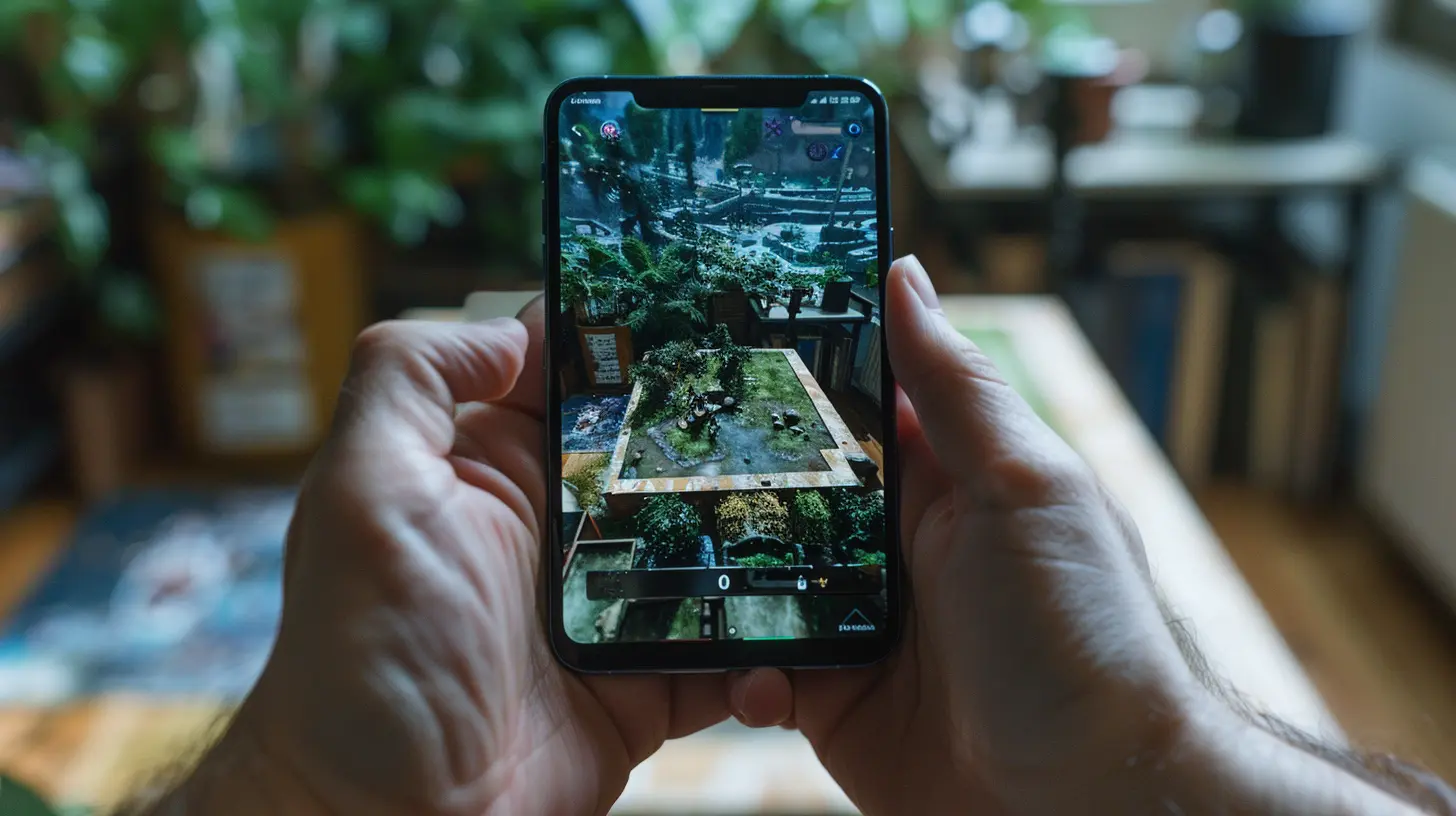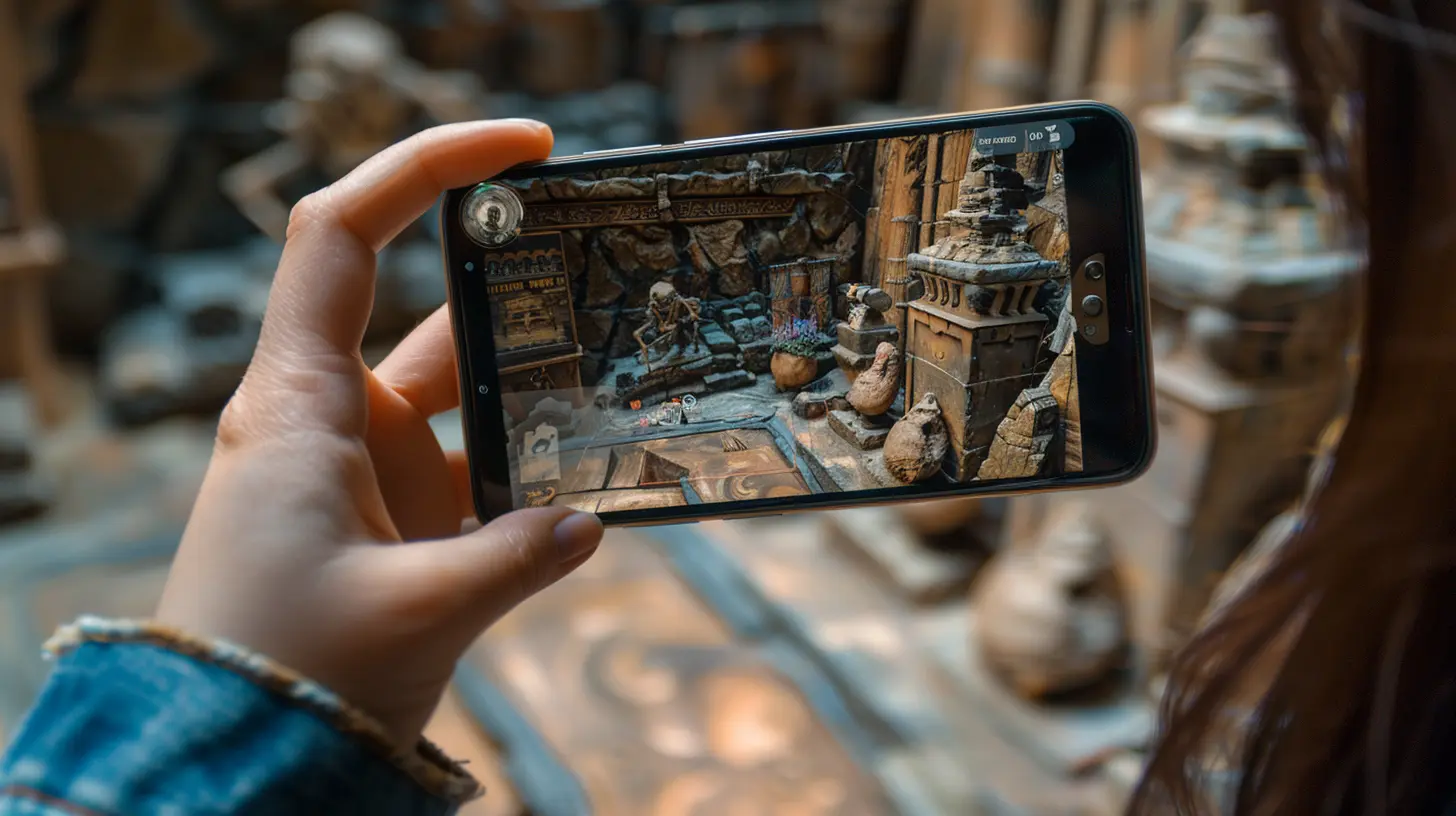Why Augmented Reality Games Are More Than Just a Fad
5 October 2025
We’ve all seen the wild headlines — “AR Gaming is the Future!” or “Augmented Reality Will Change Everything!” But let’s pause for a second. Are AR (Augmented Reality) games really carving out a permanent place in the gaming world, or is this another tech buzzword riding the hype train?
Well, spoiler alert: They’re absolutely more than a passing trend.
Yeah, you read that right.
Augmented Reality games are shaking things up in the gaming industry in ways that are deeper, more meaningful, and frankly, way cooler than most people realize. So grab your phone, open your mind, and let’s dive into the what, why, and how of AR gaming’s lasting presence.
What Exactly Are AR Games?
Before we get too hyped, let’s break it down real simple.Augmented Reality games are games that blend the digital and physical worlds. Instead of zoning out in a completely virtual universe (like in VR games), AR overlays game elements onto your actual environment. Imagine seeing Pokémon chilling in your backyard through your phone screen — thanks, Pokémon Go — or zombies invading your neighborhood that you need to blast away from your living room.
It’s like the digital world is photobombing your real life. Cool, right?
Why AR Games Aren’t Just a Flash in the Pan
Let’s be honest — a lot of tech fads come and go. (Remember Google Glass? No? Exactly.)But AR gaming? It’s different. Here’s why:
1. 🔥 Real-Time Engagement That Feels... Real
People love immersion. That’s partly why VR took off. But not everyone has the space or stomach (read: motion sickness) for VR.AR is the perfect middle ground. It merges real-world surroundings with interactive digital overlays. The result? You’re still in the world while experiencing another one stitched right into it. That kind of real-time interaction is addictive — in a good way.
You’re no longer just “playing” a game. You’re living it.
2. 📱 The Hardware Barrier Is Practically Gone
AR doesn’t ask much of you. It doesn’t require a $1,500 headset or a tricked-out gaming PC. Got a smartphone? Congrats, you’re AR-ready.As phones get smarter and more powerful, the AR experience just keeps getting better. Apple and Android are already beefing up AR capabilities with frameworks like ARKit and ARCore. So, yeah — the world is literally becoming your playground.
3. 🌍 It Gets You Out into the World
Let’s face it. Most gamers (myself included) have burned more daylight than we’d like to admit sitting inside and grinding stages.AR games flip the script.
They actually incentivize you to move your butt — walk, explore, even meet strangers. Games like Ingress, Pokémon Go, or The Walking Dead: Our World push players outside, turning cities and parks into game maps.
In a way, AR is bringing back the “play outside” lifestyle but with a digital twist.
4. 👥 There’s a Strong Social Angle
Sure, you can have voice chat in traditional games — but there's something different and way more real about meeting players in the physical world.AR games create shared experiences in actual locations. Whether it’s teaming up for a raid battle in Pokémon Go or organizing scavenger hunts, AR gaming brings back face-to-face social gaming events.
It’s like LAN parties, but in your neighborhood.
5. 🧠 It’s Actually Good for Your Mental & Physical Health
We don’t often associate video games with health (unless you’re counting counting CrossFit VR or something). But AR games are sneaky good at making you healthier.Walking around? That’s cardio. Solving puzzles in real environments? That’s cognitive training.
And don’t forget the serotonin boost from spending time in nature and interacting with people IRL. It’s basically therapy with power-ups.
AR Gaming Beyond Pokémon Go (Yep, There's More)
Pokémon Go might’ve kickstarted the global AR craze in 2016, but it’s definitely not the be-all-end-all.Let’s check out a few other titles proving that AR gaming is leveling up:
📍Ingress Prime
Niantic’s original AR game, Ingress, laid the groundwork for everything that came after. It’s a sci-fi mystery game that turns your city into a battlefield between two factions. High strategy, real locations, deep lore.Still going strong years later.
👀 Jurassic World Alive
Love dinosaurs? This game lets you collect genetically-engineered dinos and battle them in real-world locations. It’s like Pokémon Go meets Jurassic Park… with fewer lawsuits.🧟♂️ The Walking Dead: Our World
AR zombies? Yes, please.This game turns your neighborhood into a post-apocalyptic survival zone. Complete missions, rescue survivors, all while dodging walkers on your actual sidewalk.
🧙♂️ Harry Potter: Wizards Unite (RIP)
Though now discontinued, it’s worth mentioning Wizards Unite. It experimented heavily with AR spellcasting, storytelling, and exploration — showing AR could work with more than just animal catching.Even in its shutdown, it proved experimentation in AR gaming is alive and well.
The Tech Behind the Magic
Let’s nerd out for just a sec.What makes AR gaming possible — and increasingly seamless — is a blend of:
- GPS and location tracking (think: movement-based events)
- Camera and sensor data (to map surroundings)
- AI and SLAM (Simultaneous Localization and Mapping) for object recognition and environment understanding
- 5G and cloud data processing (for real-time multiplayer sync)
Basically, AR gaming has graduated from being just a “cool gimmick” to full-on technological wizardry. And the development is only speeding up.
AR's Impact on the Game Industry
From indie devs to triple-A studios, AR has gotten attention for all the right reasons.It’s opening up new game design philosophies. Designers no longer think in terms of static maps or fixed spaces. The whole planet becomes a canvas — and that’s not an exaggeration.
Plus, the monetization options are evolving. Ever tried buying a potion in-game at an actual store via QR code? It’s happening. In-game purchases tied to real-world places are on the rise. It’s like DLC, but you have to walk to Starbucks for it.
Real Brands Are Betting Big on AR
If you’re still not convinced that AR gaming is here to stay, just look at where the big bucks are going.- Niantic’s Lightship AR Developer Kit is opening the playing field to more creators.
- Snapchat and Instagram are constantly pushing AR filters that are borderline games themselves.
- Companies like Apple and Meta are throwing serious R&D into AR glasses, which will eventually take mobile AR to the next level.
The investment dollars don’t lie. Big tech knows AR has legs. Strong, fast-running, multi-billion-dollar legs.
AR Gaming in the Future: What’s Next?
Here’s where things get spicy.Let’s fast-forward a few years. What does AR gaming look like?
🥽 AR Glasses and Wearables
Once AR headsets become light, stylish, and affordable (we're getting there), you won’t need to hold up your phone to play. You’ll just see the game world overlaid seamlessly into your living room or city street.Think Tony Stark meets Pokémon Trainer. That’s where we’re heading.
🧠 Smarter AI and Holograms
As AR devs get savvier with AI, virtual characters might be able to interact with our real-world surroundings more believably. Imagine battling a boss who knows to duck behind your actual couch... freaky, right?🌐 Cross-Platform & Persistent Worlds
We’ll see more AR games that continue over time, regardless of your device. Persistent virtual objects might sit on your desk for days, waiting for you to interact with them. In-game decisions could leave marks in the real world (digitally, of course).That’s full-on sci-fi territory. And it’s closer than you think.
So… Is AR Gaming Just a Fad?
Short answer? Nope.Long answer? It’s a growing, evolving, and ridiculously exciting part of the gaming universe. If traditional gaming is a movie, then AR gaming is improv theater on the streets of your town. It’s dynamic, social, physical, and full of endless possibility.
The tech is there. The audience is growing. The potential is massive.
Is it still early days? Sure.
But just like mobile gaming was laughed at before Clash of Clans and Candy Crush blew wide open, AR is patiently building its empire — one digital monster, legendary artifact, and zombie at a time.
Final Thoughts
AR gaming might’ve started as a shiny novelty. But now? It’s turning into a legit force in the world of entertainment.It encourages movement, boosts social interaction, and turns everyday spaces into interactive playgrounds. And with the rapid evolution of tech, AR’s only going to get more immersive, more intuitive, and way more fun.
So next time someone calls AR gaming a fad, just smile — and toss a Poké Ball at their feet.
Because this is just the beginning.
all images in this post were generated using AI tools
Category:
Augmented Reality GamesAuthor:

Jack McKinstry
Discussion
rate this article
1 comments
Thalyn Willis
Great insights! Augmented reality games blend entertainment with real-world interaction, creating unique experiences. Their potential to enhance social connections and learning is exciting—definitely more than just a passing trend!
October 19, 2025 at 5:02 AM


